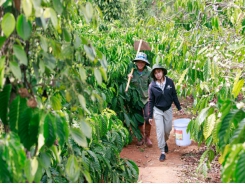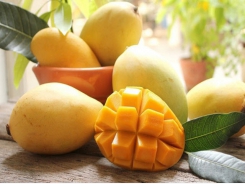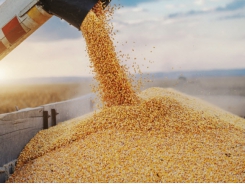South-central coastal, Central Highlands regions gain bumper harvest of summer-autumn rice

The south-central coastal and Central Highlands regions was harvesting the summer - autumn crop and has had a successful rice crop despite the impact of the COVID - 19 pandemic, said Nguyen Thanh Tung, vice director of the Crop Production Department of the Ministry of Agriculture and Rural Development.
The summer-autumn crop and the 2021 crop in the regions took place in adverse conditions in terms of weather, water sources, and limited consumption markets that badly affected by the COVID-19 pandemic and high price of fertilizer.
However, the whole regions still achieved very positive results, Tung said in in the meeting of reviewing the 2021 summer-autumn and autumn crops and plan of implementing the 2021-2022 winter-spring crop in the south-central coastal region which was held on October 25 in Hanoi.
In the summer-autumn crop and the 2021 crop, the provinces of the South Central Coast and Central Highlands performed early production and fast sowing with flexible sowing schedule for each sub-region.
In areas with sufficient water, the farmers pushed up the intensive farming while the areas that was at risk of water shortage at the end of the crop converted to other crops that use less water such as corn, peanuts, sesame, vegetables and beans.
Using short-term and extremely short-term varieties in the situation of drought and water shortage brought high efficiency, helping to reduce irrigation water by 2 times (10-12 days per crop).
The total area of rice cultivation in the whole regions in 2021 was estimated at more than 772,000 ha, (an increase of more than 41,000 ha), the yield was estimated at more than 6.1 tonne per hectare, increasing by 1,370kg per hectare), the output was estimated to reach more than 4.7 million tonnes, up 355,000 tonnes compared to the same period in 2020.
The area for other crops on rice land in the whole regions in 2021 was estimated at over 21,900 hectares, of which the annual crop was more than 20,900 hectares and perennial crop was 984 hectares.
The amount of seed sown tended to decrease at over 150 kg per ha while the level from 100-150 kg per hectare tended to increase.
However, there was still great variation between provinces and production seasons.
For coffee trees, the area is continuously increasing.
By 2020, the coffee area in the Central Highlands was more than 639,000 hectares, an increase of more than 132,000 hectares compared to 2010 (an increase of 26.1 per cent).
Productivity reached 2.8 tonnes per hectare, an increase of 570kg per hectare compared to 2010 (up 49.5 per cent).
The areas of replanting coffee in the Central Highlands from 2014 to 2020 reached more than 124,200 hectares, reaching 103.6 per cent of the plan.
The total area of replanting in 2021 reached more than 14,800 hectares.
In 2021, the Central Highlands provinces were estimated to reach total area of more than 82,000 hectares of coffee, a decrease of more than 1,000 hectares compared to 2020, with harvested area of more than 73,000 hectares, and a yield of more than 2.5 tonnes per hectare, 100kg lower than 2020.
The output reached more than 190,000 tonnes, an increase of more than 13,000 tonnes compared to 2020 while the coastal region reached more than 2,000 hectares with yield of 1.5 tonnes per hectare and output of more than 3,000 tonnes.
For cashew trees, by 2020, the south-central coastal region region has an area of more than 30,000 hectares with an output of more than 18,000 tonnes.
The Central Highlands region has total area of more than 87,000 hectares, with output of more than 74,000 tonnes.
The 2021-2022 cashew crop was being cared for a new flowering crop in late 2021 and early 2022.
For rubber trees, the total area of in the two regions was more than 284,000 hectares. The yield was more than 1.4 tonnes per hectares and the output was more than 335,000 tonnes.
Focussing on winter-spring crop in December
The Crop Production Department recommended that the mass sowing should start from December 10 to 31, 2021 and later than January 10, 2022 to harvest before April 30 for the areas which had adequate water.
Particularly for three rice crops in Binh Dinh Province, the sowing has to start from November 25 to December 5, 2021, and from November 15 to late December in Khanh Hoa, Ninh Thuan and Binh Thuan provinces.
The areas that will face water shortage needed to be sown before December 10, 2021. The areas is for 10-15 per cent of the total cultivated area.
Low-lying areas that have poor drainage capability needed to sow before January 10, 2022 right after water receding.
For areas where the water recedes too slowly after January 10, 2022, the transplanting could be sown to take advantage of time and shorten growth and early flowering of rice.
The Central Highlands provinces must prepare the irrigation water sources to sow from December 10 to 31, 2021.
In areas where is at risk of water shortage at the end of the crop in dry season, the localities must calculate and consider the sowing area in accordance with the amount of water in the reservoir and recommend the use of short-term seeds and early sowing b(efore December 10, 2021). Particularly, some rice production areas of 3 crops in Lam Dong Province shoule be sown from November 15 to December 10.
Regarding the rice variety structure, the provinces should count on the situation of each locality to use appropriate rice varieties.
However, it is necessary to promote the use of certified and short-term varieties with high yield, good quality, and good disease and drought resistance.
In the areas at risk of water shortage, the varieties with short growing time are recommended.
The localities base on the specific situation to make recommendations on the appropriate structure of rice varieties.
For vegetables and short-term industrial crops, the south-central coastal region must focus on developing and expanding production of maize, sesame, and peanuts for the winter-spring crop on alluvial soil along the river, infertile gray soil, and coastal sandy soil.
In the Central Highlands, it is necessary to focus on producing short-term vegetables and crops to take advantage of water for irrigation at the beginning of the crop.
For long-term industrial plants and fruit trees, the provinces should continue to review and identify key fruit trees which are suitable to the land and ecological conditions so as develop policies and solutions for sustainable development.
In particular, the localities should not plant trees outside the approved planning area and not replant pepper on old areas and unsuitable soil.
At the meeting, Deputy Minister of Agriculture and Rural Development Le Quoc Doanh emphasised that for the winter-spring crop of 2021-2022 in the south-central coastal and Central Highlands regions, the seasonal structure must be very flexible because the regions have many sub-regions with different climatic conditions and water sources.
Therefore, localities must closely follow the weather situation and be very flexible in arranging the seasonal structure accordingly to ensure safety for sowing.
In addition, the development of irrigation water must be closely monitored because these are specific regions.
For pepper tree, Deputy Minister Le Quoc Doanh noted that the prices were currently good, but if the cultivation area could not be well controlled, it was easy to repeat the lesson of "race to increase the area" as before leading to great consequences.
For long-term industrial crops, especially coffee, Doanh expressed concern and noted that localities must strictly control the intercropping of other crops on coffee areas, because if the management was loosening, the risk of “loss of both main crops and intercropping” was very high.
"There had been many cases of intercropping, but the density of inter-crop plants was as thick as the main crop that led to use more water and fertiliser bady affecting the root system of the main crop,” Doanh noted.
Có thể bạn quan tâm
Phần mềm

Phối trộn thức ăn chăn nuôi

Pha dung dịch thủy canh

Định mức cho tôm ăn

Phối trộn phân bón NPK

Xác định tỷ lệ tôm sống

Chuyển đổi đơn vị phân bón

Xác định công suất sục khí

Chuyển đổi đơn vị tôm

Tính diện tích nhà kính

Tính thể tích ao hồ










 Vietnam has to import fishmeal…
Vietnam has to import fishmeal…  Over US$ 2 billion of…
Over US$ 2 billion of…